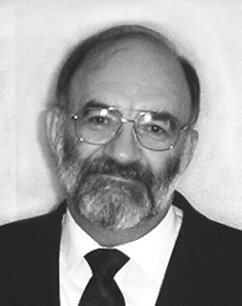MY PERSPECTIVE, Gary Damron
We started this series by looking at the purpose of the gospel writers, which was to introduce us to Jesus. We began with John’s account of the pre-beginning, ever-existing person of Jesus. Last week, we researched Matthew's genealogy of His birth, tracing the lineage of "Jesus the Messiah" through His earthly father Joseph.
There's another genealogy recorded by Luke, but it is different in several ways. While Matthew began with Abraham and moved forward, the record in Luke chapter 3 traveled backward. It also started with Joseph, but commentator Adam Clarke explains that it appears instead to be Mary's line since her father Eli is listed. In this case, Luke used the term "son" to describe Jesus as the son-in-law of Eli. Both Joseph and Mary were descendants of David, with Mary's ancestry through David's son Nathan, and Joseph's from Solomon. [Thus, when the census was ordered, Mary and Joseph traveled to the homeland of their ancestors, to Bethlehem which was called the City of David.] And rather than stopping at Abraham, Luke's lineage goes as far back as "Adam, the son of God" (Luke 3:38).
Matthew wrote to primarily a Jewish audience, but Luke's gospel was broader. Therefore, he emphasized the universal scope of the gospel, and showed the inclusive design of salvation: Jesus is not just for the people of one ethnicity or religion. By outlining Jesus's ancestry back to Adam, the first human, Luke presented Jesus as the Savior for all, affirming His connection to the entire human race.
The narrative we're looking at today is strategically placed in Luke chapter 3:23-38, directly after Jesus's baptism and before His temptation in the wilderness. Luke wrote, “And when He began His ministry, Jesus Himself was about thirty years of age, being supposedly [considered] the son of Joseph, the son of Eli ....”. Rather than including genealogy within a birth and infancy timeline, Luke inserted it within the events which show the messiahship of Jesus: the authority and the nature of His ministry.
At first glance, Luke's mention of genealogy here seems to interrupt the flow of his narrative, so why would he have written it that way? He was a scholarly author, and his treatment of Jesus' ancestry was not merely an add-on to the Jewish concern for heritage, nor simply a list of Jesus' earthly forefathers. He deliberately structured the genealogical facts as a follow-up to a significant event in Jesus' life.
Just prior to this, "Jesus also was baptized, and while He was praying, heaven was opened, and the Holy Spirit descended upon Him in bodily form like a dove, and a voice came out of heaven, 'Thou art My beloved Son, in Thee I am well-pleased'" (Luke 3:21-22). The genealogy that follows shows that this Son of God is also "Son of Man," whose human lineage derives from Adam. The One baptized and filled with the Spirit is not a mystery man or a mythical half-god; He is a real person with a family tree, born into a list of human ancestors, embedded in the story of salvation history which began with creation.
Luke was a traveling companion of Paul, the apostle to the Gentiles. Luke's connection of Jesus to Adam places Him as the new head of humanity. As the new Adam (described by Paul in Romans 5:12-21), Jesus brings a fresh beginning to the entire human race. The first Adam had failed by giving in to temptation, which introduced sin and death into the world. His disobedience brought estrangement from God and condemnation. But as the New Adam, Jesus brings righteousness and justification for all humanity.
The genealogy positioned between the baptism and the temptation leads the reader to view the wilderness incident with Satan as a replay of Adam's original temptation. But the difference, of course, is that Jesus was triumphant.
Another reason Luke highlighted Jesus' humanity was to underscore an essential aspect of Christian theology: A human with a real flesh-and-blood ancestry would represent all of humanity as He offered Himself as the sacrificial substitute for human sin. God promised, and He brings to fulfillment His promises, through real people who have babies and who pass on the faith from generation to generation.
Since Adam, countless empires have risen and fallen, but the thread of the "family of faith" continues. World powers have exercised authority and faded away, while another child is born who keeps the faith and passes on the heritage. The line wanders, sometimes backtracks, but always its compelling movement is forward, and is never broken!
From the time Luke and Matthew wrote, no other New Testament writer expressed a concern for genealogy. We know little about the ancestry of Peter or John or Paul. There are incidental mentions of Peter's mother-in-law, Timothy's mother and grandmother, and Zebedee, who was the father of James and John, but no further meticulous outlining of ancestors. Why? Because in Christ there is a new creation, a new humanity, based not on our father and grandfather, but upon our Heavenly Father and our elder brother, Jesus. We are privileged to share His spiritual line. And by faith and grace, we inherit our part in the kingdom.











